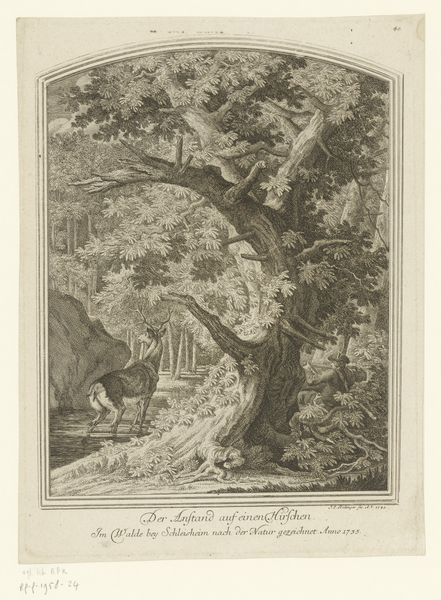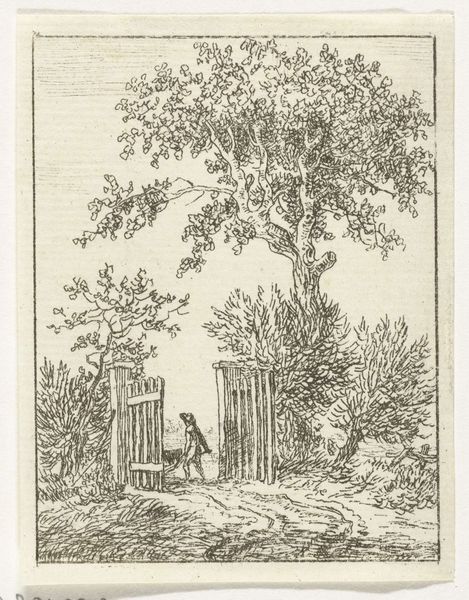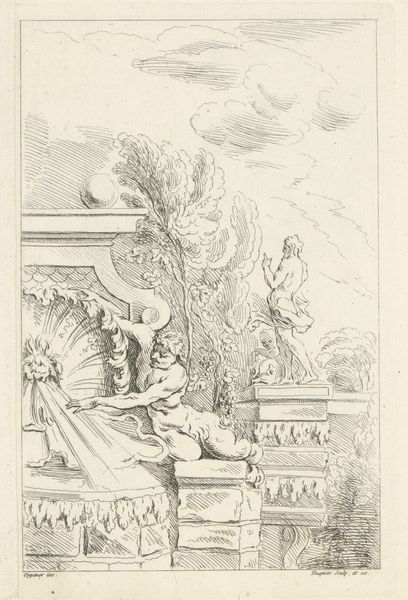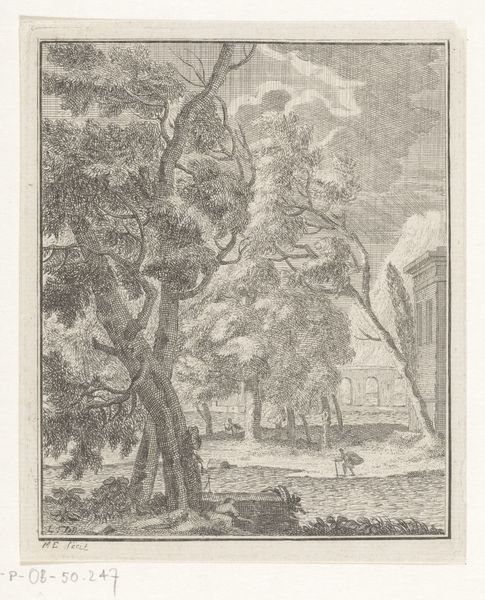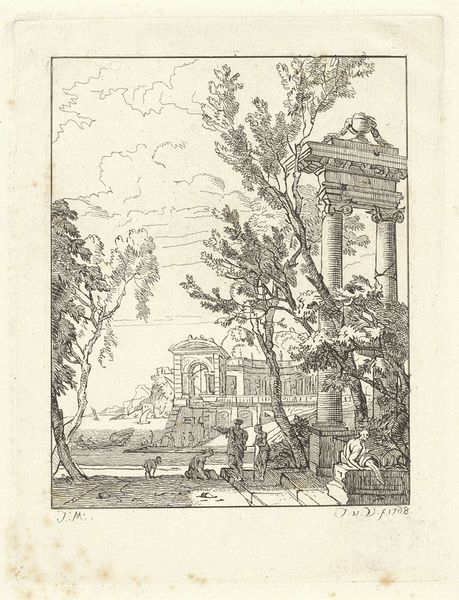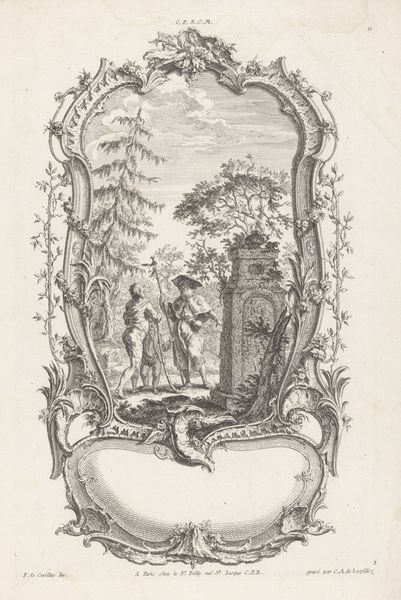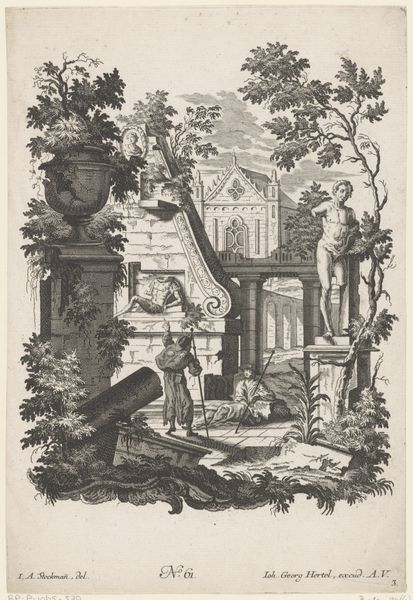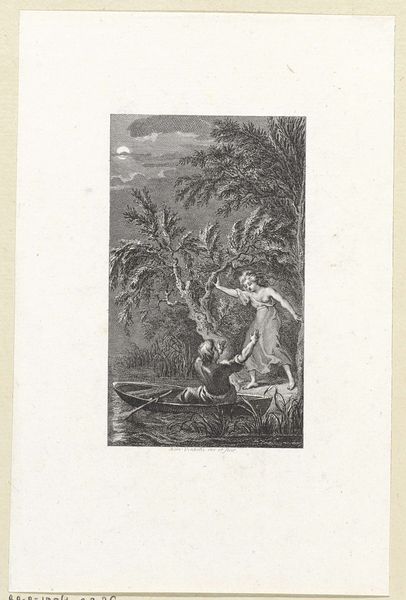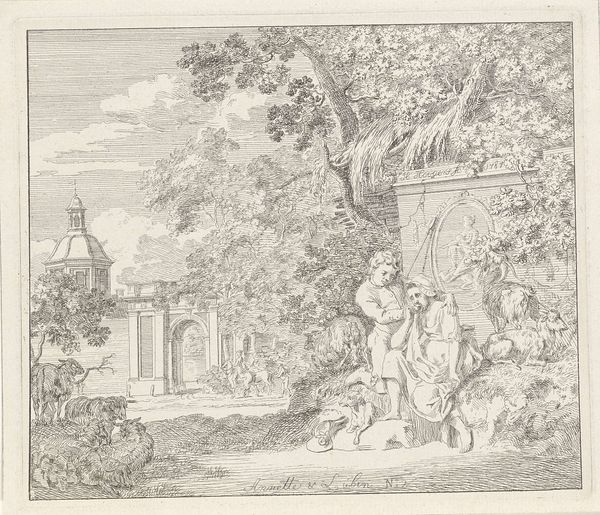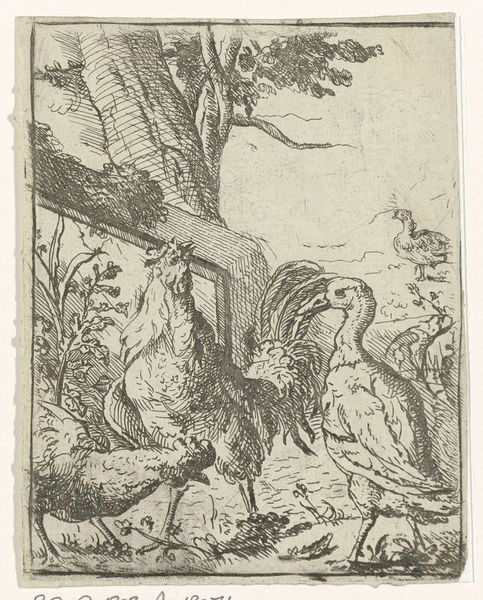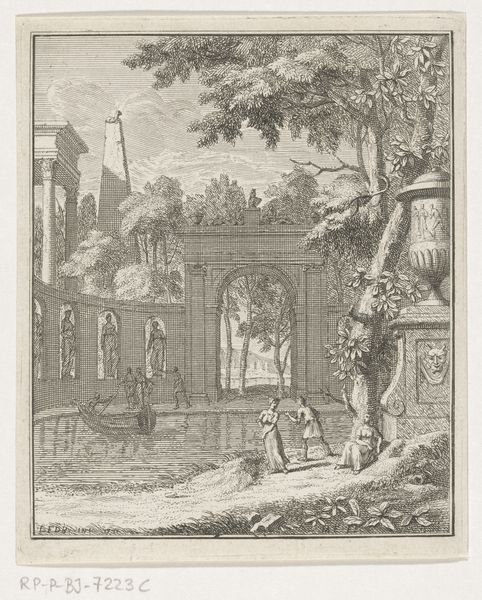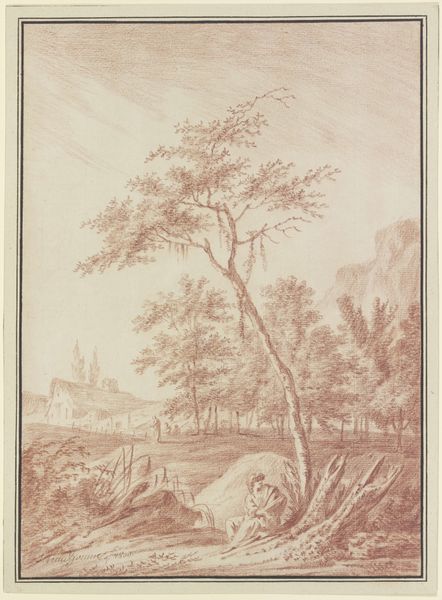
Dimensions: height 97 mm, width 70 mm
Copyright: Rijks Museum: Open Domain
Editor: The first thing that strikes me is the quietude. A peaceful domesticity. Curator: This delicate drawing, made with ink and pencil on paper, is called "Garden with Monumental Entrance to a Park" by Johannes de Bosch, dating from around 1778. De Bosch worked primarily as a draughtsman. Let’s explore how this drawing connects to artistic and social practices of the period. Editor: Absolutely. The details are incredible; the aged paper, the precise pen work. One is so curious as to the social context in which such skilled labor comes into being! Curator: Notice how the grand architectural entrance implies wealth and status, a stage for the carefully placed fauna. The peacocks and chickens suggest a controlled, idealized natural world, reflective of aristocratic pastimes and display of possessions. Editor: Indeed. What are your thoughts on how de Bosch balanced realism and romanticism in this scene, especially considering artistic trends of the late 18th century? There's definitely a tension between a straightforward landscape sketch and idealized fantasy, is there not? Curator: Exactly! It reflects the burgeoning romantic movement with its return to nature, while still maintaining an almost scientific precision. And also it seems very related to the social functions and locations these things existed. How might such art legitimize power? Editor: Perhaps this served as a subtle reinforcement of social hierarchy, suggesting harmonious control over the natural world—something the landed gentry often sought to project through art. What would it mean for someone outside of this class to engage with such images? Curator: It does lead one to consider what this art meant beyond the aesthetics, pointing to the interplay between power, production, and consumption during a time of great social change. Editor: Looking closely at this work of De Bosch gives us a lens for understanding this era's social norms and political undertones with materials to do so as mundane as ink and pencil on paper. Curator: I agree. This quiet scene holds quite a lot about a world beyond itself.
Comments
No comments
Be the first to comment and join the conversation on the ultimate creative platform.
